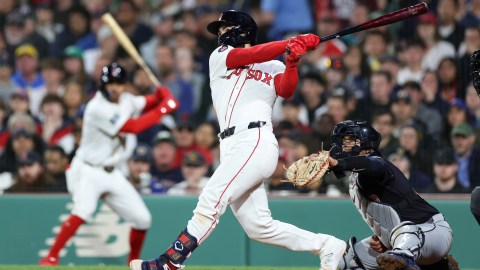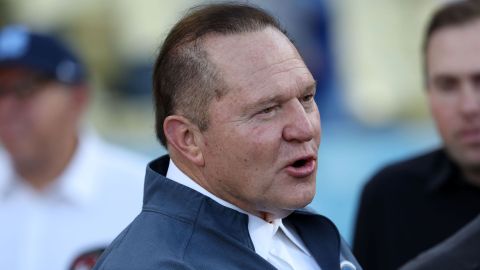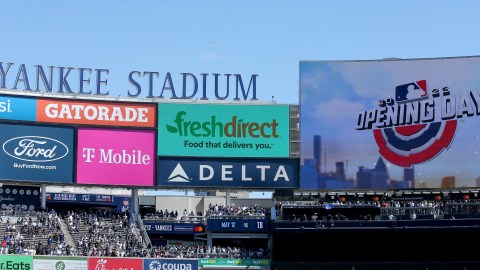 Beginning with the 2008 season, base coaches at all levels of professional baseball were required to wear helmets. But, as sad as it is, it appears that baseball has all but forgotten the reason why the game decided to bring about that change.
Beginning with the 2008 season, base coaches at all levels of professional baseball were required to wear helmets. But, as sad as it is, it appears that baseball has all but forgotten the reason why the game decided to bring about that change.
On July 22, 2007 — less than a month into his coaching career — Tulsa Drillers first base coach Mike Coolbaugh was struck by a line drive on the neck. The shot essentially severed the 35-year-old’s left vertebral artery, causing a massive brain hemorrhage, which killed him on impact.
Most first base coaches stand even with the bag, so they’re also about 90 feet away from the batter. Pitchers, however, by the time they finish their motion, are about 55 feet away from the batter — and often in a poor position to protect themselves.
After being reminded again by J.A. Happ — just as we were late last season by Brandon McCarthy — that baseball can be very dangerous, the message is clear: If MLB doesn’t do something soon to address protecting pitchers, a player will die on the field for just the second time in any major American sport.
The first time a player died on the field was in football, and it wasn’t even due to injuries sustained during the game. In 1971, Detroit Lions wide receiver Chuck Hughes, who had undiagnosed arteriosclerosis, collapsed after running a route and died on the turf at Tiger Stadium.
An occurrence such as that is obviously a fluke, but if baseball actually sees a pitcher die on the field after incurring the wrath of a line drive, there’s no telling what the fallout would be. More to the point, this is a known risk that can be addressed, at least in part, by modern technology.
Again, if standing 90 feet away from a batted ball can kill you, then what, exactly, does baseball think the risk is of standing 55 feet away? A 95-mph fastball takes about four-tenths of a second to go from the pitcher’s hand to the catcher’s glove. A batted ball can come back the same way at about 110 mph, so the reaction time for a pitcher — who, again, may be in a poor position to protect himself after completing his motion — is even less.
The prospect of a pitcher dying on the field shouldn’t just be a concern to baseball. It should be viewed as an inevitability unless action is taken. Worse yet, it may not even be in the big leagues where something so horrific occurs, but in college. With the NCAA’s metal bats, which produce even faster line drives, it may well be a teenager who ends up being the unlucky one.
After suffering a cracked skull and an epidural hemorrhage from his line drive to the head, McCarthy actually spoke about the possibility of pitchers wearing some sort of helmet. Perhaps unsurprisingly, even after his personal experience, the now-Diamondbacks right-hander said he doesn’t think such helmets should ever be mandatory, comparing wearing bulky headgear to throwing with his opposite arm. But of course McCarthy is going to say something like that, as athletes are generally adverse to any change that may even imperceptibly hinder them.
The point is that the technology is out there, and it’s up to MLB to protect its players, rather than leaving it up to them to make the wrong choice. During last year’s postseason, a report even emerged that baseball was considering making minor league pitchers wear some sort of headgear as soon as 2013. Obviously that didn’t come to fruition, but it shows that not only are helmets for pitchers feasible, but eminently doable in the very near future.
In short, there’s just no reason to continue holding out on the issue of pitcher helmets. Players will complain, but, just like batting helmets first and ear flaps after that, they will adjust, and the game will be safer. Obviously a helmet may not have helped Coolbaugh, but the point is we know the very real danger of line drives to a pitcher’s head (as Forbes points out, about one in every 105 MLB pitchers is hit in the head by a line drive), and we have a technology capable of mitigating that danger.
Let’s hope this change can be implemented across baseball before an unfortunate player pays the ultimate price.



